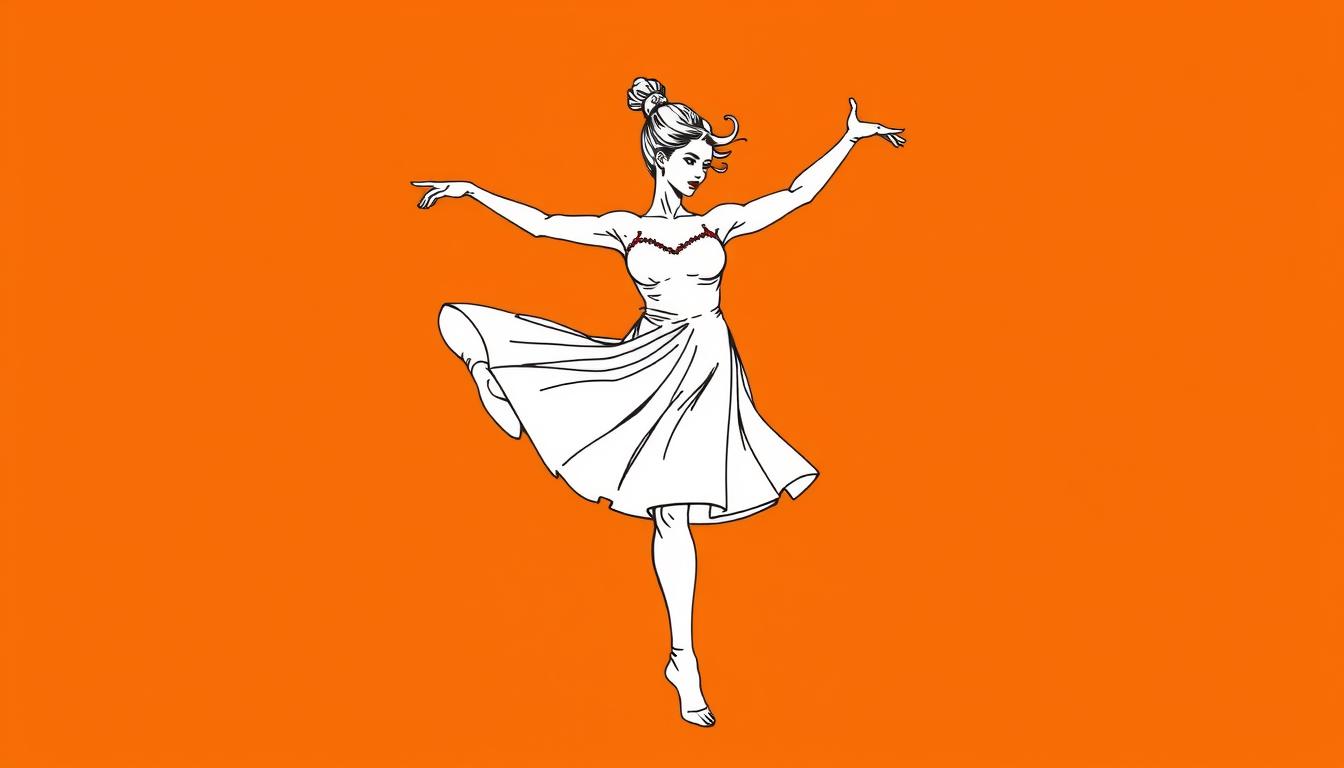Louise Lecavalier commands attention through disciplined craft. Her career began at eighteen in Montreal. She joined Le Groupe Nouvelle Aire, a pivotal move.
There, she met choreographer Édouard Lock. Their partnership would reshape contemporary dance. Her physical power became legendary on stage.
A signature look defined her presence. Platinum dreadlocks and a muscular frame were iconic. So was her gravity-defying full-body barrel jump.
International recognition came with a Bessie Award in 1985. She was the first Canadian to win this honor in New York. It validated her explosive talent.
Decades of excellence followed. Honors include the Order of Canada and the Governor General’s Performing Arts Award. These accolades reflect a lifetime of artistic integrity.
This dancer built a career on precision. She refused to compromise her vision. Her work remains a testament to raw, physical artistry.
Early Life and Foundational Steps
The experimental energy of Montreal’s dance community shaped an artist who would redefine physical performance. This environment blended Francophone tradition with bold new ideas.
Growing Up in Montreal
Montreal in the late 1970s offered a vibrant cultural landscape. Lecavalier grew up surrounded by this evolving arts scene. The city’s creative pulse became her training ground.
She entered professional dance at eighteen, a relatively late start. Most ballet dancers begin training in childhood. Her physical strength and quick learning curve helped her catch up rapidly.
Early Inspirations and Dance Beginnings
Joining Le Groupe Nouvelle Aire marked her first serious engagement with contemporary movement. This company valued athleticism over classical ballet’s formalities. The approach suited her natural abilities perfectly.
Meeting Édouard Lock at Nouvelle Aire proved pivotal. He saw in her not just a dancer but a collaborator. Lock recognized her potential for extreme physicality and androgynous presence.
She also danced with Pointépiénu, another Montreal-based company. This experience diversified her technical vocabulary. It built the stamina that would define her future performances.
These formative years in Montreal’s experimental dance world created the foundation. Key mentors and the city’s creative energy shaped the artist who would soon command international stages.
Louise Lecavalier: A Trailblazing Icon
With a company called La La La Human Steps, a new kind of dance star was born. This partnership redefined the limits of the human body in performance. It created a visual spectacle that left audiences stunned.
Joining La La La Human Steps
The collaboration began in 1981 with the production Oranges. It launched an eighteen-year journey at the forefront of contemporary dance. Choreographer Édouard Lock found his perfect interpreter in this powerful performer.
She became the main character and inspiration for the company’s most famous works. Their symbiosis pushed choreography into new, frenetic territories.
Signature Moves and Stage Presence
Her image became iconic. Platinum dreadlocks and a muscular frame signaled a departure from tradition. The dancer mastered a breathtaking full-body barrel jump.
This move involved launching horizontally and rotating parallel to the floor. It showcased immense core strength and fearless precision. Her sharp, explosive energy defined the company’s aesthetic.
Defining the Androgynous Aesthetic
Works like Human Sex and Infante, c’est destroy showcased this unique style. The choreography was technically brutal and stripped of gender markers. Louise Lecavalier embodied this androgynous ideal completely.
Critics in London and Paris called her “the most tragically brilliant dancer alive.” Another noted she was “the essence of La La La Human Steps.” Her work with Lock remains a high point in modern dance.
Innovative Collaborations and Artistic Milestones
The dancer’s formidable presence and unique movement vocabulary attracted creators from far beyond the dance world. Louise Lecavalier entered spaces where rock music and cinema collided with physical art. Her intensity translated perfectly.
These projects introduced her work to massive new audiences. They proved contemporary dance could hold its own in any context.
Global Projects and High-Profile Duets
Her collaboration with David Bowie remains legendary. Choreographed by Édouard Lock, their duet was performed live and broadcast globally. It reached viewers who never set foot in a dance theater.
She later joined Bowie’s Sound and Vision world tour. Performing on huge concert stages, her explosive style became an MTV staple through the “Fame ’90” video. This work with La La La Human Steps gained international rock credibility.
From David Bowie to Frank Zappa: Cross-Industry Impact
Lecavalier’s scope extended to avant-garde music. She performed with Frank Zappa and Germany’s Ensemble Modern in 1992. Her movement met complex musical scores with powerful grace.
She also explored narrative film. Her part as Cindy ‘Vita’ Minh in Kathryn Bigelow’s Strange Days showcased her range. Even in acting, her physical authenticity was unmistakable.
Michael Apted’s documentary Inspirations framed her creative process alongside greats like painter Roy Lichtenstein. It validated her approach to creation.
Key collaborations amplified her influence across industries:
- A groundbreaking duet with David Bowie, broadcast worldwide.
- Guest performances on a major rock tour and in iconic music videos.
- Live concerts with avant-garde composer Frank Zappa.
- A significant role in a Hollywood film by director Kathryn Bigelow.
- Features in documentaries exploring the nature of artistic inspiration.
She brought rigorous dance integrity to every project. This crossover appeal expanded the very definition of a performer’s reach.
Enduring Legacy and Celebrated Impact
The end of an eighteen-year partnership with Édouard Lock marked not an ending but a creative rebirth. Louise Lecavalier immediately began collaborating with choreographers like Tedd Robinson, creating memorable duets and ensemble pieces.
In 2006, she founded her own company, Fou Glorieux, gaining full control over her artistic vision. This move culminated in her first self-choreographed work, So Blue, premiering in 2012. The piece revealed a mature, personal voice that continues to tour internationally alongside Battleground.
Recent projects show her adaptability across digital and live performance. She created new solos and contributed to motion-capture works, while her teaching at institutions like New York University passes her methodology to new generations of dancers.
Lecavalier’s career demonstrates how an artist can evolve while maintaining creative integrity. Her influence extends through performance, choreography, and pedagogy, securing her legacy as a transformative figure in contemporary dance.




